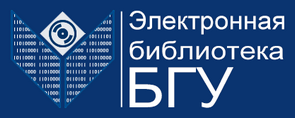Пожалуйста, используйте этот идентификатор, чтобы цитировать или ссылаться на этот документ:
https://elib.bsu.by/handle/123456789/259093| Заглавие документа: | Search for new physics in dijet angular distributions using proton–proton collisions at √s=13TeV and constraints on dark matter and other models |
| Авторы: | Chekhovsky, V. Mossolov, V. Gonzalez, J.S. CMS Collaboration |
| Тема: | ЭБ БГУ::ЕСТЕСТВЕННЫЕ И ТОЧНЫЕ НАУКИ::Физика |
| Дата публикации: | 2018 |
| Издатель: | Springer New York LLC |
| Библиографическое описание источника: | Eur Phys J C 2018;78(9). |
| Аннотация: | A search is presented for physics beyond the standard model, based on measurements of dijet angular distributions in proton–proton collisions at s=13TeV. The data collected with the CMS detector at the LHC correspond to an integrated luminosity of 35.9fb-1. The observed distributions, corrected to particle level, are found to be in agreement with predictions from perturbative quantum chromodynamics that include electroweak corrections. Constraints are placed on models containing quark contact interactions, extra spatial dimensions, quantum black holes, or dark matter, using the detector-level distributions. In a benchmark model where only left-handed quarks participate, contact interactions are excluded at the 95% confidence level up to a scale of 12.8 or 17.5TeV, for destructive or constructive interference, respectively. The most stringent lower limits to date are set on the ultraviolet cutoff in the Arkani–Hamed–Dimopoulos–Dvali model of extra dimensions. In the Giudice–Rattazzi–Wells convention, the cutoff scale is excluded up to 10.1TeV. The production of quantum black holes is excluded for masses below 5.9 and 8.2TeV, depending on the model. For the first time, lower limits between 2.0 and 4.6TeVare set on the mass of a dark matter mediator for (axial-)vector mediators, for the universal quark coupling gq= 1.0. |
| URI документа: | https://elib.bsu.by/handle/123456789/259093 |
| DOI документа: | 10.1140/epjc/s10052-018-6242-x |
| Scopus идентификатор документа: | 85053928588 |
| Финансовая поддержка: | CERN accelerator departments for the excellent performance of the LHC and thank the technical and administrative staffs at CERN and at other CMS institutes for their contributions to the success of the CMS effort. In addition, we gratefully acknowledge the computing centres and personnel of the Worldwide LHC Computing Grid for delivering so effectively the computing infrastructure essential to our analyses. Finally, we acknowledge the enduring support for the construction and operation of the LHC and the CMS detector provided by the following funding agencies: BMBWF and FWF (Austria); FNRS and FWO (Belgium); CNPq, CAPES, FAPERJ, FAPERGS, and FAPESP (Brazil); MES (Bulgaria); CERN; CAS, MoST, and NSFC (China); COLCIENCIAS (Colombia); MSES and CSF (Croatia); RPF (Cyprus); SENESCYT (Ecuador); MoER, ERC IUT, and ERDF (Estonia); Academy of Finland, MEC, and HIP (Finland); CEA and CNRS/IN2P3 (France); BMBF, DFG, and HGF (Germany); GSRT (Greece); NKFIA (Hungary); DAE and DST (India); IPM (Iran); SFI (Ireland); INFN (Italy); MSIP and NRF (Republic of Korea); MES (Latvia); LAS (Lithuania); MOE and UM (Malaysia); BUAP, CINVESTAV, CONACYT, LNS, SEP, and UASLP-FAI (Mexico); MOS (Montenegro); MBIE (New Zealand); PAEC (Pakistan); MSHE and NSC (Poland); FCT (Portugal); JINR (Dubna); MON, RosAtom, RAS, RFBR, and NRC KI (Russia); MESTD (Serbia); SEIDI, CPAN, PCTI, and FEDER (Spain); MOSTR (Sri Lanka); Swiss Funding Agencies (Switzerland); MST (Taipei); ThEPCenter, IPST, STAR, and NSTDA (Thailand); TUBITAK and TAEK (Turkey); NASU and SFFR (Ukraine); STFC (United Kingdom); DOE and NSF (USA). Individuals have received support from the Marie-Curie programme and the European Research Council and Horizon 2020 Grant, contract No. 675440 (European Union); the Leventis Foundation; the A. P. Sloan Foundation; the Alexander von Humboldt Foundation; the Belgian Federal Science Policy Office; the Fonds pour la Formation à la Recherche dans l’Industrie et dans l’Agriculture (FRIA-Belgium); the Agentschap voor Innovatie door Wetenschap en Technologie (IWT-Belgium); the F.R.S.-FNRS and FWO (Belgium) under the “Excellence of Science – EOS” – be.h project n. 30820817; the Ministry of Education, Youth and Sports (MEYS) of the Czech Republic; the Lendület (“Momentum”) Programme and the János Bolyai Research Scholarship of the Hungarian Academy of Sciences, the New National Excellence Program ÚNKP, the NKFIA research grants 123842, 123959, 124845, 124850 and 125105 (Hungary); the Council of Science and Industrial Research, India; the HOMING PLUS programme of the Foundation for Polish Science, cofinanced from European Union, Regional Development Fund, the Mobility Plus programme of the Ministry of Science and Higher Education, the National Science Center (Poland), contracts Harmonia 2014/14/M/ST2/00428, Opus 2014/13/B/ST2/02543, 2014/15/B/ST2/03998, and 2015/19/B/ST2/02861, Sonata-bis 2012/07/E/ST2/01406; the National Priorities Research Program by Qatar National Research Fund; the Programa Estatal de Fomento de la Investigación Científica y Técnica de Excelencia María de Maeztu, grant MDM-2015-0509 and the Programa Severo Ochoa del Princi-pado de Asturias; the Thalis and Aristeia programmes cofinanced by EU-ESF and the Greek NSRF; the Rachadapisek Sompot Fund for Postdoctoral Fellowship, Chulalongkorn University and the Chulalongkorn Academic into Its 2nd Century Project Advancement Project |
| Располагается в коллекциях: | Статьи НИУ «Институт ядерных проблем» |
Полный текст документа:
| Файл | Описание | Размер | Формат | |
|---|---|---|---|---|
| Sirunyan2018_Article_SearchForNewPhysicsInDijetAngu.pdf | 1,09 MB | Adobe PDF | Открыть |
Все документы в Электронной библиотеке защищены авторским правом, все права сохранены.

